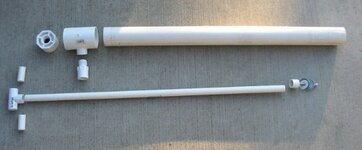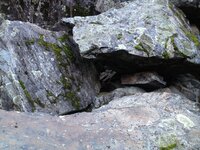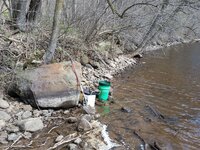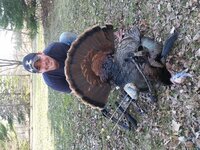bottlecap
Hero Member
Last weekend I found a pretty good spot for gold. It was on a river behind a really large boulder, the boulder was about 5'x4'x4', I know large rocks can be hot spots but I was wondering if it pays to try to get deeper on the back side of the boulder? I was able to get a couple shovel fulls out and it is tough digging going deeper but I want to try it. No matter what the response is I'll probably try but I am trying to understand how gold placement works. Could there be more gold from older deposits deeper or did I probably get the majority of it because it was stopped from sinking any further by the layer of boot sized rocks and gravel?? Like I said I'll give anything a shot but I am really trying to figure this whole thing out. Thanks!!! If I give it a try I'll let you know how it goes!
Upvote
0




 The boulder I am referring to was completely under water 3 weeks ago, actually a couple feet underwater, last weekend to my surprise the river had dropped enough the boulder and all the other boulders on that shore line were completely dry however the gravel around them was still almost saturated with water. The boulders along that shoreline are lined on the bottom edge of a shelf so if you were standing right next to the boulder area on the wet gravel the actual "high and dry shoreline" where the established forest area is would be about eye level, essentially it is a miniature cliff that has a boulder wall along the edge of it.
The boulder I am referring to was completely under water 3 weeks ago, actually a couple feet underwater, last weekend to my surprise the river had dropped enough the boulder and all the other boulders on that shore line were completely dry however the gravel around them was still almost saturated with water. The boulders along that shoreline are lined on the bottom edge of a shelf so if you were standing right next to the boulder area on the wet gravel the actual "high and dry shoreline" where the established forest area is would be about eye level, essentially it is a miniature cliff that has a boulder wall along the edge of it.




 ...That's odd - why are you sittin sideways in the picture?
...That's odd - why are you sittin sideways in the picture? 
